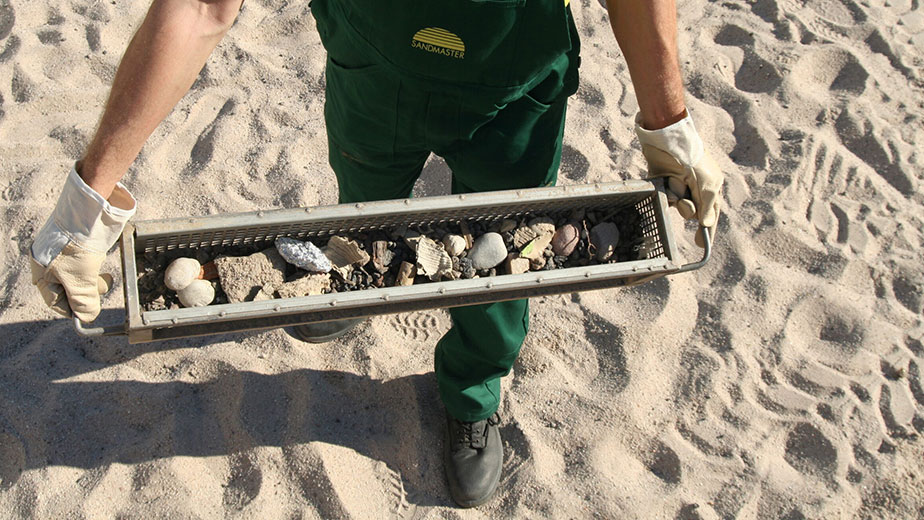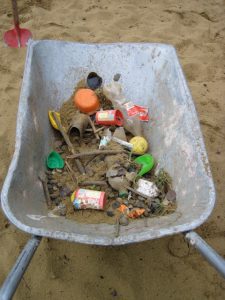
 Sandmaster has been cleaning sand for almost 40 years, so we have a lot of experience. In many years dozens of studies have been made about the “cleanliness” of sand. Our sand cleaning machines are regularly certified by TÜV, we periodically have our #sandmaster process certified and we have commissioned microbiological expertises several times.
Sandmaster has been cleaning sand for almost 40 years, so we have a lot of experience. In many years dozens of studies have been made about the “cleanliness” of sand. Our sand cleaning machines are regularly certified by TÜV, we periodically have our #sandmaster process certified and we have commissioned microbiological expertises several times.
The cleaning process (sand master process)
Our patented process is based on a special separation process of organic and inorganic particles with a diameter from approx. 5 mm (broken glass, leaves, cigarette butts, animal excrement, coins, toy parts and other waste). All the sand is taken up to a depth of 40 cm (depending on the depth of pouring) and thrown against a steep screen by means of a conveyor belt. In the process, fine-grained materials, i.e. the sand, pass through the sieve and fall back to the ground. All other parts scrape off the sieve and land in a special collection basket and are then disposed of.
Fall protection according to DIN EN 11 777
As hard and hard sand on playgrounds or in diving pits or volleyball fields is a bad protection against falls, this must be counteracted. Thanks to the sand master process, our machines achieve a continuous cleaning depth of up to 40 cm, which in turn means that the sand is circulated, loosened and aerated to the maximum depth. This also brings us to the important point of hygiene…
Evaluation of hygiene
The sand master process significantly reduces the number of aerobic, colony-forming units. However, it is crucial that the organic components (faeces, leaves) are selectively removed, as these have a germ density that is around ten thousand times higher than that of the surrounding sand. The depth of cleaning is also a decisive criterion. Coli bacteria grow especially in the lower sand layers. Organic material present there is no longer decomposed and rotten due to the lack of oxygen. Circulation to a depth of 30 to 40 cm aerates the sand in such a way that a stable biological balance is established after a short time. Disinfection of the sand by chemical means or thermal processes would destroy the natural balance and would have to be repeated every 14 days. Optionally, the product “Sandmaster KotStop” can be applied, which greatly reduces the contamination by animal excrements (on a purely biological basis).
A surface cleaning with a depth of for example only 10 cm is not comparable with the depth cleaning described here and is therefore only a “cosmetic” treatment.
Summary
In our report, the investigating institute concludes as follows:
“…in the case of other sand cleaning devices, which only shake and grind the sand including impurities through horizontally mounted sieves, a lasting improvement in quality from a hygienic point of view is not to be expected. Even a cleaning depth that is too shallow will only bring about a slight improvement in quality. The Sandmaster process is a recycling of sand and saves the complete and also expensive sand replacement for years!
